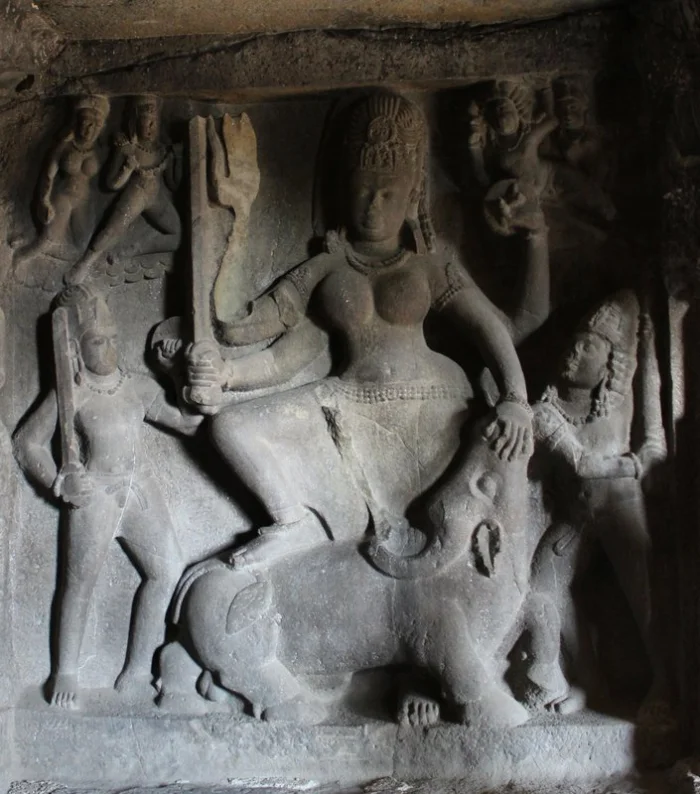Rock-cut architecture involves excavating solid rock in its natural setting to create structures, buildings, and sculptures. The primary applications of this technique are for constructing temples, tombs, and cave dwellings. The oldest known example of rock-cut architecture is the Barabar Caves in Bihar, which date back to the 3rd century BC.
Due to the abundance of rocky mountains in India, rock-cut architecture was particularly well-suited for the region. Structures hewn from stone were known for their durability, making them an ideal choice for construction.
Evolution of rock-cut architecture in India
Ashoka and his grandson Dasaratha are credited with creating the earliest rock-cut caves. The period of early Buddhist architecture spans from the 2nd century BC to the 2nd century AD and is characterized by structures made mostly of wood, such as the chaitya and viharas. Examples of this architecture can still be viewed at Karla, Kanheri, Nasik, Bhaja, Bedsa, and Ajanta.

The second phase of rock-cut architecture began in the 5th century AD, marked by the abandonment of timber and the introduction of Buddha images as a prominent architectural element. During this phase, viharas underwent a slight modification in which the inner cells, previously inhabited only by monks, were now also home to Buddha images.
The subsequent and most influential phase of rock-cut architecture is the Dravidian rock-cut style, characterized by the mandapa and ratha. A mandapa is an open pavilion excavated from rock and typically takes the form of a simple columned hall with two or more cells at the back wall. A ratha is a monolithic shrine carved from a single rock.
Important rock-cut caves
A few Rock-cut caves and features have been given below. These are important in the exam point of view.
Kanheri caves
- They are located near Mumbai.
- They cover the period from 2nd to 9th century AD.
- They belong to the Hinayana phase of Buddhist architecture.
- However, additions were made when Mahayana Buddhism was gaining ground. Ex: 5th century image of Buddha.
- It has around 100 caves.
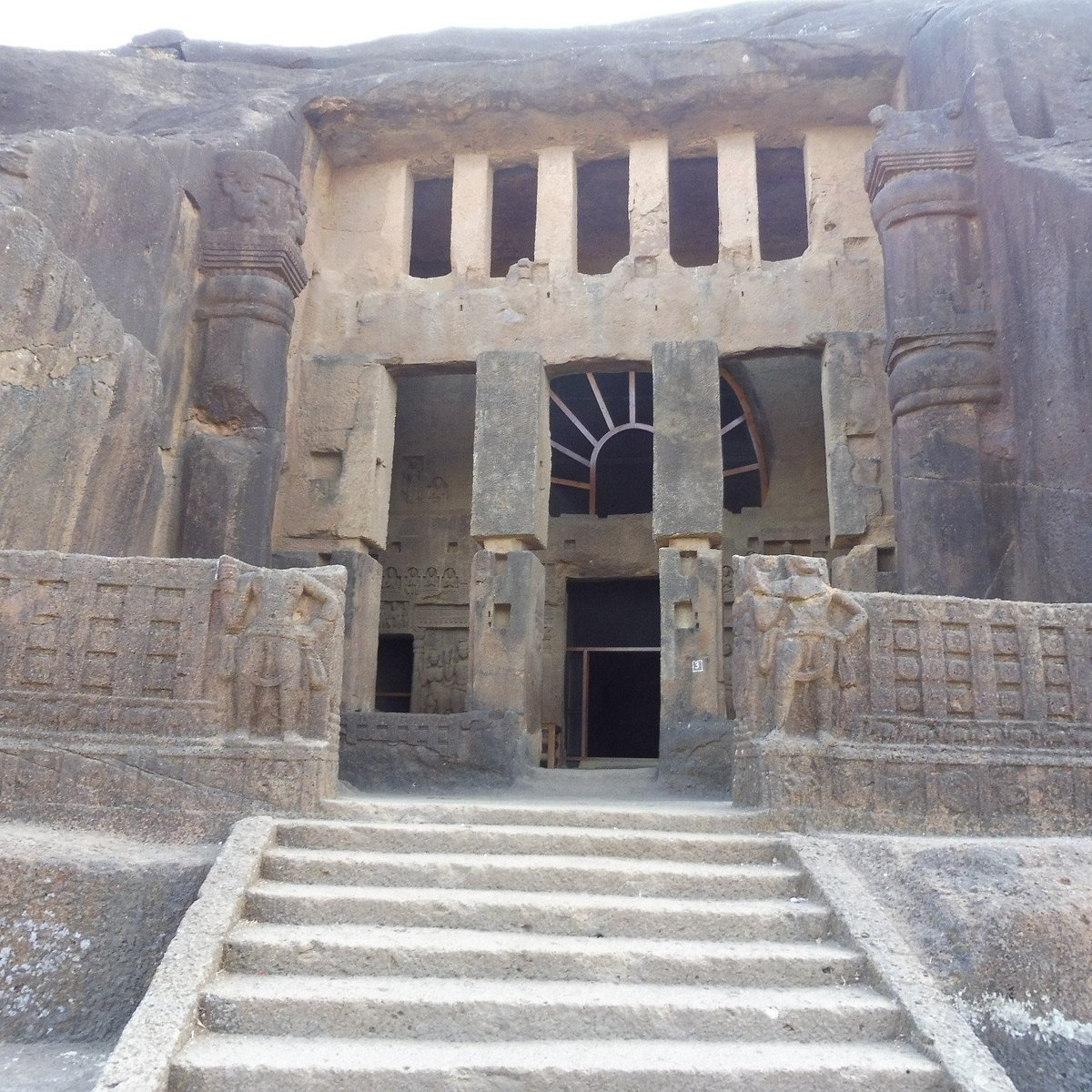
Jogeshwari caves
- These caves are located within the island of Salsette.
- They belong to the last stages of Mahayana Buddhism.
- Brahmanical shrines are also found here.
- They belong to the second half of the 8th century.
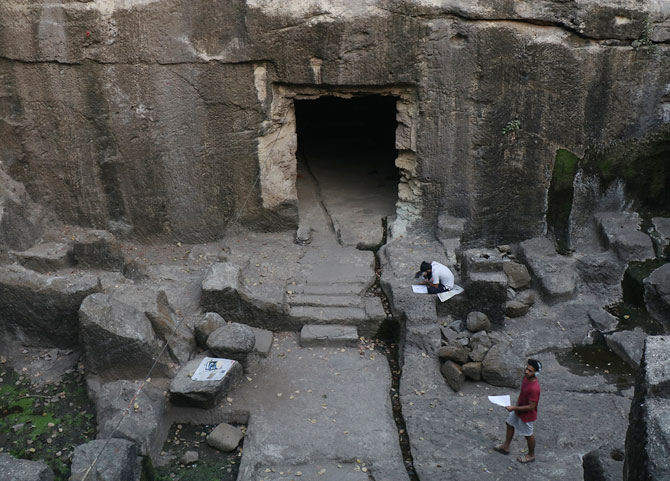
Montpezir
- It is also called as Mandapeswar caves. It is situated near Mumbai.
- The caves are situated in Mount Poinsur, Borivali, a suburb of Mumbai. Originally, the caves were on the banks of the Dahisar River but later the course of the river changed.
- They are the only Brahmanical caves to be converted into a Christian shrine.
- It has three caves which are dated to 8th century.
Karla caves
- Karla caves are located on Banaghta hills near Mumbai.
- It belongs to the Hinayana period of the Buddhist architecture.
- The chaitya here is among the largest and the best preserved in the country.
- Many traders and Satavahana rulers made grants for construction of these caves.
- The main cave, called the Great Chaitya cave, or Cave No.8, features a large, intricately carved chaitya, or prayer hall, dating back to 120 CE.
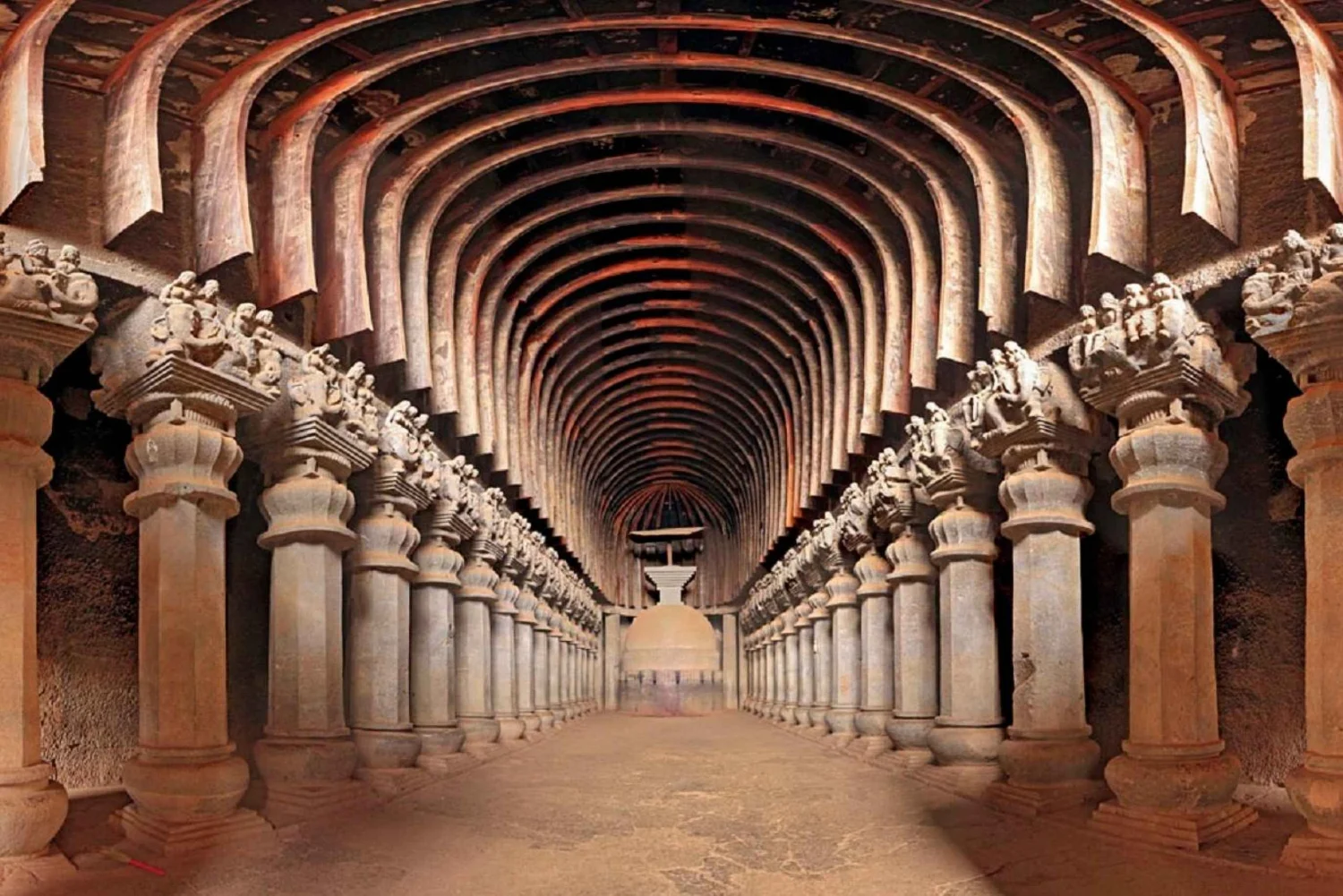
Bhaja caves
- It is located near Pune.
- They are believed to be excavated in 2nd century BC.
- It belongs to the Hinayana Buddhism sect in Maharashtra.
- These caves are notable for their indications of the awareness of wooden architecture.
- The carvings prove that tabla – a percussion instrument – was used in India for at least 2300 years.
Bedsa caves
- It is located near Pune.
- The Chaitya resembles the great hall at Karle but is smaller.
- It has four pillars with carvings of horses, bulls and elephants mounted by make and female riders.
Ellora caves
- It is located in the state of Maharashtra.
- is one of the largest rock-cut Hindu temple cave complexes in the world, featuring Hinduism in particular and few Buddhist and Jain monuments with Artwork dating from the 600–1000 CE period.
- Cave 16 features the largest single monolithic rock excavation in the world, the Kailash temple, a chariot shaped monument dedicated to Lord Shiva.
- There are over 100 caves at the site, all excavated from the basalt cliffs in the Charanandri Hills.
- All of the Ellora monuments were built during the Rashtrakuta dynasty, which constructed part of the Hindu and Buddhist caves, and the Yadava dynasty, which constructed a number of the Jain caves.
- Stone pillar at Kailashnath temple.
- Cave 15 of Ellora is known as Dashavatara cave. It belongs to the period of Rashtrakuta king, Dantidurga. This cave mainly depicts Lord Shiva & Lord Vishnu in various forms. This two-storeyed structure has a large courtyard in which stands a monolithic Nandi mandapa.
- Notable among the Buddhist caves is Cave 10, a chaitya worship hall called the ‘Vishvakarma cave’, built around 650 CE. It is also known as the “Carpenter’s Cave”, because the rock has been given a finish that has the appearance of wooden beams.
- Buddha in one of the Ellora caves.
- At the north end of Ellora are the five Jain caves belonging to the Digambara sect, which were excavated in the ninth and early tenth centuries could be found.
- Lord Mahavira is present in Ellora caves.
- The Indra Sabha (Cave 32), excavated in the 9th century, is a two-storey cave with a monolithic shrine in its court. 19th-century historians confused the Jain Yakshas for alternate images of Indra that were found in Buddhist and Hindu artworks, thus leading to the temple being given the misnomer “Indra Sabha”.
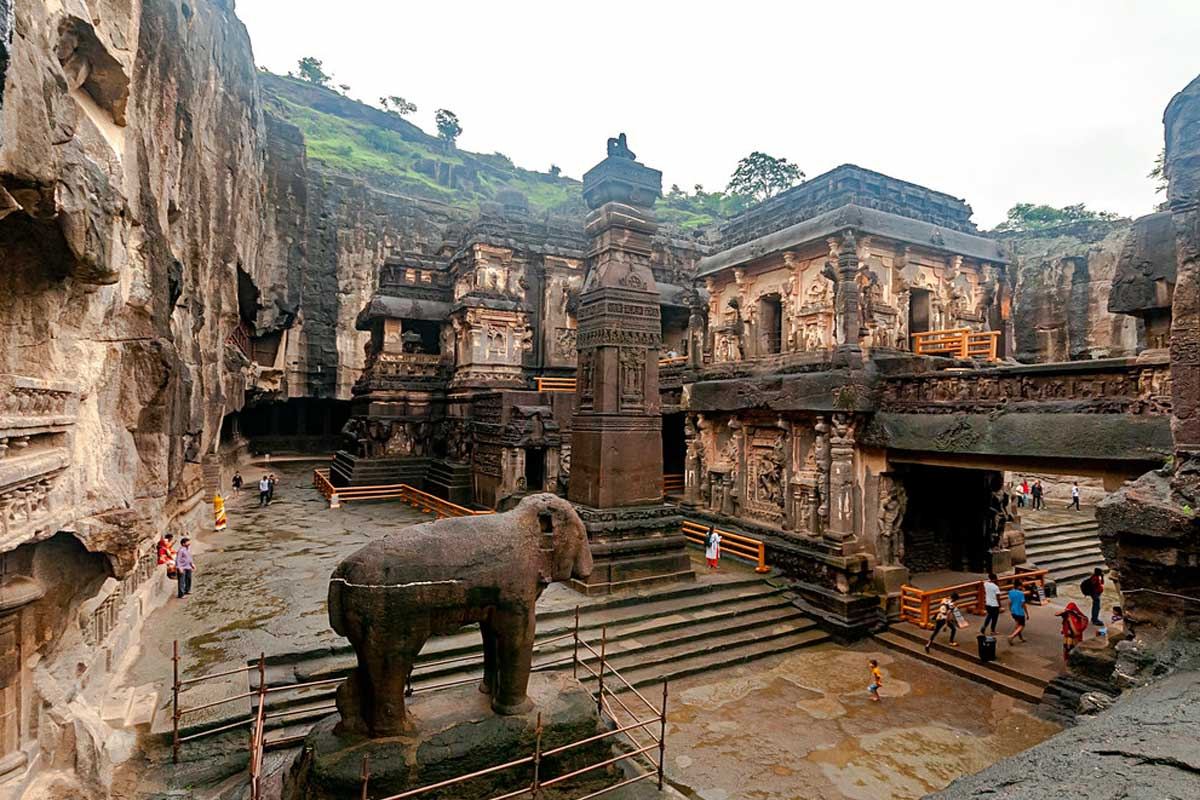
Ajanta caves
- The caves are carved out of flood basalt rock of a cliff, part of the Deccan Traps formed by successive volcanic eruptions at the end of the Cretaceous geological period.
- They are a group of rock-cut caves in the Sahyadri ranges on Waghora River near Aurangabad in Maharashtra.
- There are a total of 29 caves. All of these caves belong to the religion of Buddhism.
- The caves were developed in the period between 200 BCE to 650 CE.
- The construction of the caves received patronage from Vakatakas kings.
- References to these caves could be found in the observations made by the Chinese traveller Fa Hien and also Hieun Tsang.
- The earliest group consists of caves 9, 10, 12, 13 and 15A. The murals in these caves depict stories from the Jataka.
- The second phase of construction at the Ajanta Caves site began in the 5th century. The second phase is attributed to the theistic Mahayana.
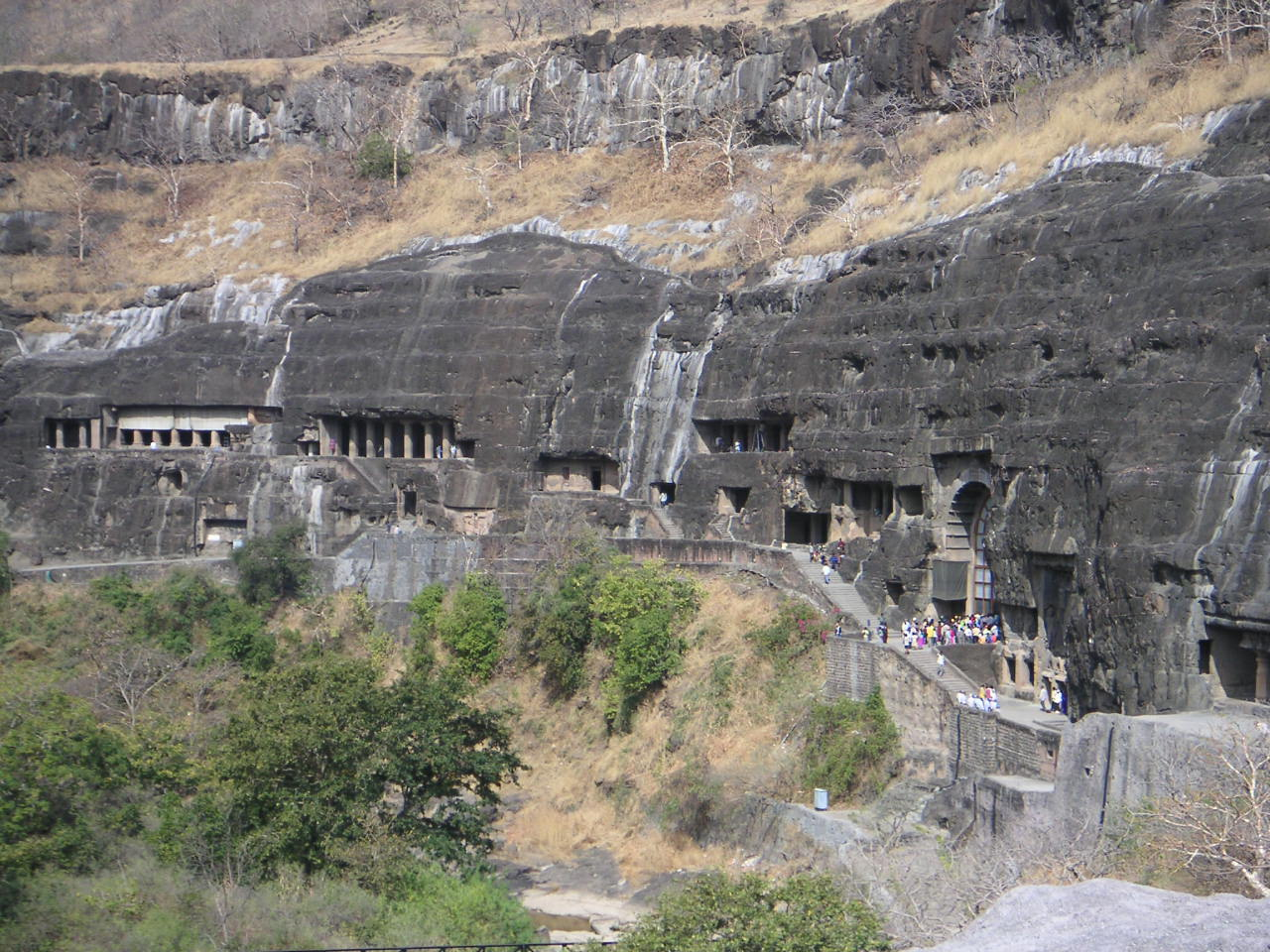
Elephanta caves
- It is located in Mumbai.
- They belong to 8th century AD.
- The Ganesh Gumpha is one of the earliest examples of the Brahmanical temple and has been excavated in a rock terrace, the outside consisting of a columned verandah and approached by steps flanked by sculpted elephants.
- One of the master-piece of this cave is the three faced-image of Shiva.
- Other important sculptures here are- Ravana shaking Kailasa, marriage of Shiva and Parvati, Shiva performing the Tandava dance, Ardhanariswara.
- Sculpture of Trimurti in Elephanta caves.
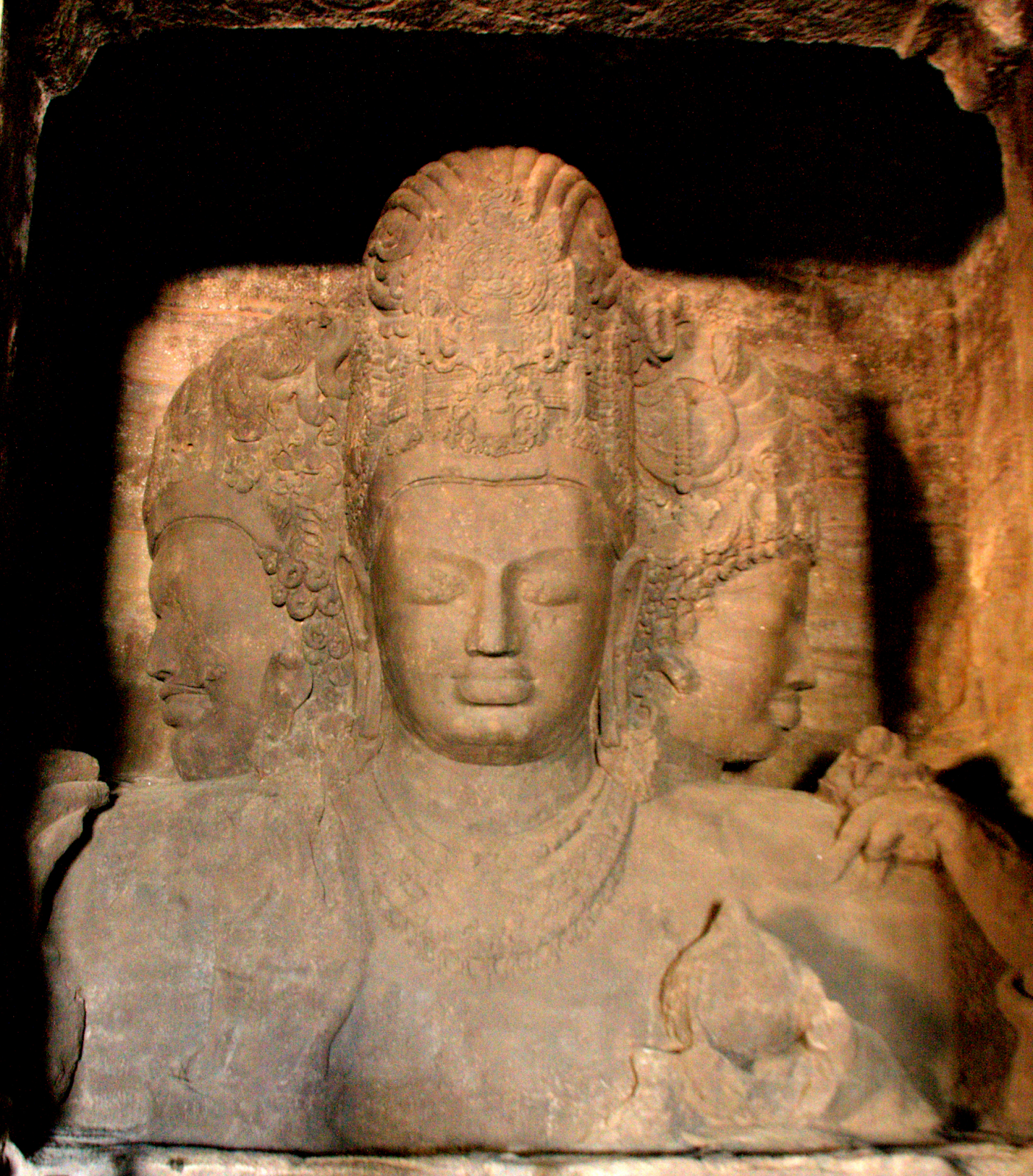
Udaygiri caves
- These caves are located in Madhya Pradesh.
- They contain some of the oldest surviving Hindu temples and iconography in India.
- They are the only site that can be verifiably associated with a Gupta period monarch from its inscriptions.
- Udayagiri caves contain iconography of Vaishnavism (Vishnu), Shaktism (Durga and Matrikas) and Shaivism (Shiva).
- They are notable for the ancient monumental relief sculpture of Vishnu in his incarnation as the man-boar Varaha, rescuing the earth symbolically represented by Bhudevi clinging to the boar’s tusk as described in Hindu mythology.
- The site has important inscriptions of the Gupta dynasty belonging to the reigns of Chandragupta II (c. 375-415) and Kumaragupta I.
- The Udayagiri Caves complex consists of twenty caves, of which one is dedicated to Jainism and all others to Hinduism.

The Contribution of Pallavas to Rock-cut Architecture
The Pallavas are widely recognized for their exceptional contributions to rock-cut architecture. The monuments they created through rock excavation during their reign have garnered worldwide admiration for their beauty and the skills demonstrated by the artists.
The Pallavas were a powerful ancient dynasty that governed a vast portion of Southern India, including present-day Tamil Nadu, from the 6th to the 9th centuries AD, with Kanchipuram as their capital. They are credited with introducing the Dravidian style of temple architecture.
The earliest Pallava shrines were rock-cut cave temples, which gradually evolved into monolithic shrines carved from enormous rocks, culminating in "structural temples" built from the ground up.
Their remarkable contributions in the realm of rock-cut architecture can be seen in Mahabalipuram, where multiple rock-cut shrines featuring cave-like verandahs or mandapas with rows of pillars are located. Most of the pillars are adorned with carved lions at their bases, a signature feature found in almost all Pallava architecture.
Detailed panels inside the caves depict episodes from Hindu mythology, and niches often house sculpted deities. The Varaha Mandapa in Mahabalipuram has magnificent carvings that tell stories of Varaha, the avatar of Lord Vishnu in the form of a boar. The Mahishamardini Mandapa is dedicated to Mahishamardini, a form of Goddess Durga, and the Trimurti Mandapa to the trinity of Lord Brahma, Lord Vishnu, and Lord Shiva.
The Krishna Mandapa, renowned for its magnificent panel called Govardhanadhari, portrays Lord Krishna holding up the mythical Govardhana hill to protect the people of his village from torrential rains.

Comparison of art found at Ellora and Mahabalipuram
Stylistic Similarities
The Mahabalipuram and Ellora monuments share several stylistic similarities. Both are carved out of single stones, and their reliefs, sculptures, and architecture feature gods and goddesses from Shaivism, Vaishnavism, and Shaktism. The relief panels at both sites also depict stories from the Hindu epics Ramayana and Mahabharata, such as Arjuna's Penance at Mahabalipuram and Ravana shaking Kailash at Ellora.
Additionally, both sites have rock-cut and cave temples, and share features such as the Gavaksha or Chandrashala, a type of horseshoe arch. The carvings of Mahisasur-Vadh in Ellora are similar to the Pallava style in Mahabalipuram. Other shared features include crest carvings, such as the Kailashnath temple and Dasavatara Nandimandapa at Ellora, and the barrel-vaulted roof at Bhima ratha in Mahabalipuram.
Apart from the similarities some distinct features make each of these architectural treasures different from the other.
Ellora caves were carved out of volcanic basaltic formation, while those at Mahabalipuram are of granitic origin. Ellora's architecture also includes Jain temples and Buddhist chaitya halls. The figures at Mahabalipuram are more slender, less mobile, and colder in feeling, while Ellora's architecture relies mainly on core carving techniques. The cruciform plan of the Kailash temple at Ellora is not found in Mahabalipuram's architecture.
